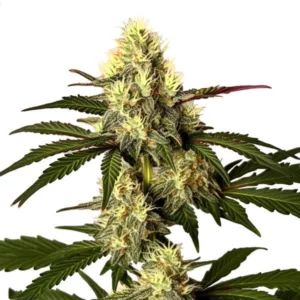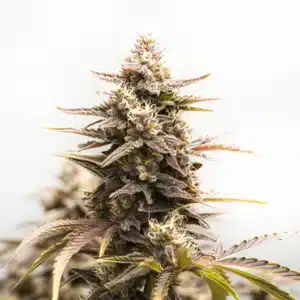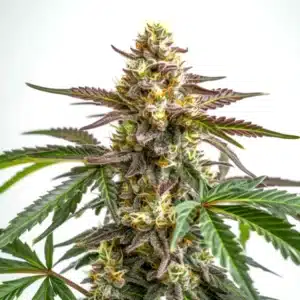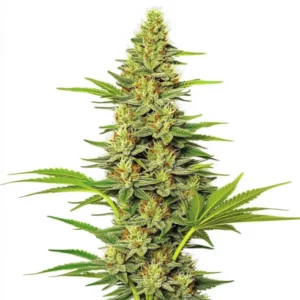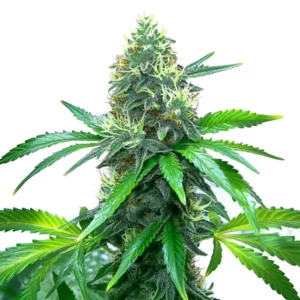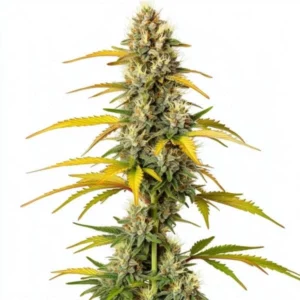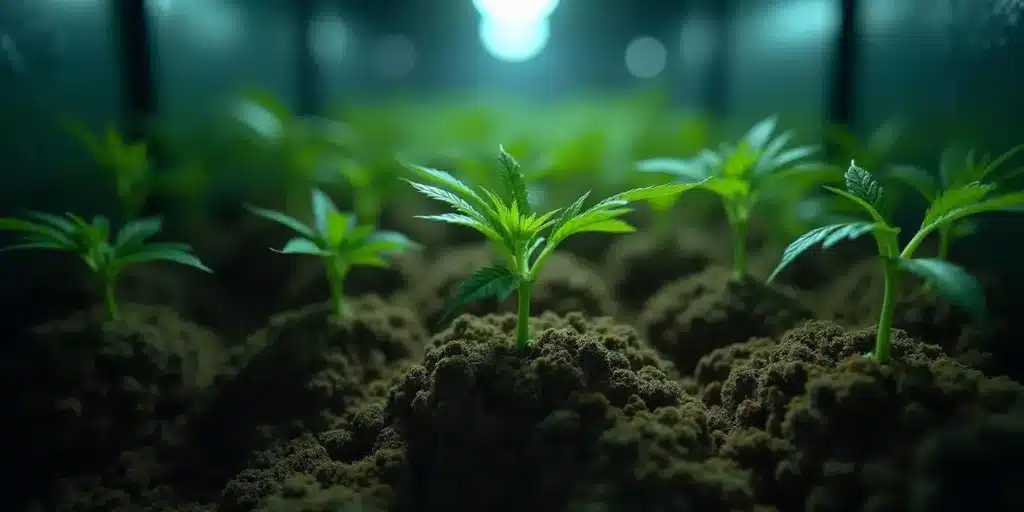
Cannabis Root Lock
When diving into cannabis cultivation, you might stumble upon the term “cannabis root lock”. It’s a hidden challenge for many growers. Root lock happens when roots can’t access the nutrients they crave, even if they’re present in the soil. This issue can cripple your plants, leading to poor growth and low yields.
What Causes Cannabis Root Lock?
Root lock is most often caused by three main issues in the root zone: an excess of watering, an over-accumulation of nutrients (mineral salts), or improper pH conditions in your irrigation water. For optimal nutrient uptake in soil, the pH of your water should always be around 6.0. When these conditions are off, the roots can no longer absorb the nutrients they need.
Recommended Strains
Do Si Dos
|
|
THC | 26% - 30% (High) |
|
|
Type | Feminized |
|
|
Yield | Medium |
|
|
Phenotype | 65% Indica / 35% Sativa |
Do Si Dos Autoflower F1
|
|
THC | 22% - 24% (Medium) |
|
|
Type | Autoflowering F1 |
|
|
Yield | High |
|
|
Phenotype | 40% Indica / 60% Sativa |
Addressing cannabis root lock is crucial for both novice and veteran growers. By understanding the causes and solutions, you can ensure your plants thrive.
Promos & Deals
Signs of Root Lock in Cannabis Plants
Identifying cannabis root lock early on can save you time and resources. A healthy plant will have vibrant green leaves that are angled slightly upwards; this is the optimal state of health you should use as a baseline. One of the first signs of a problem is yellowing leaves. This occurs because the plant can’t absorb the necessary nutrients. It’s important to note that the symptoms of root lock caused by an excess of nutrients can look very similar to a nutrient deficiency. It is easy to confuse the two and mistakenly add more fertilizer, which only makes the lockout worse.
Another symptom is stunted growth. If your plants aren’t growing as they should, root lock might be the culprit. Also, check for wilting or drooping leaves, which can indicate the roots are struggling. Curling or browning of leaf tips is another clear indication that the plant’s root system is under stress.
Preventing Root Lock in Cannabis Growing
Prevention is always better than cure. To prevent root lock, start with quality, well-aerated soil. Consider using a soil blend with added perlite or coco coir to improve drainage.
Regularly check your watering practices. Overwatering can lead to compacted soil and root lock. Ensure your pots have proper drainage. Furthermore, the temperature of your irrigation water is a critical factor for root health. Cold or very hot water can shock the roots, leading to stress and contributing to lockout. Aim to always use water with a stable temperature of around 18°C (65°F).
Another aspect of preventing root lock is maintaining the correct pH level. For soil or other substrates, the ideal pH range is between 6.0 and 7.0. An imbalanced pH can hinder nutrient absorption. Regularly test and adjust the pH of your water and growing medium.
Cannabis Root Lock Solutions
Once you’ve identified root lock, it’s time to act. Start by flushing the soil. To make this flush more effective, it is recommended to use water with a pH that is slightly lower than usual, around 5.5. This helps to dissolve and wash away the excess mineral salts more efficiently, allowing the roots to recover faster.
Another effective method is to repot your plants. Choose a larger pot with fresh, well-draining soil to give the roots more space. In addition to flushing and repotting, consider incorporating beneficial microbes into your soil to enhance nutrient uptake.
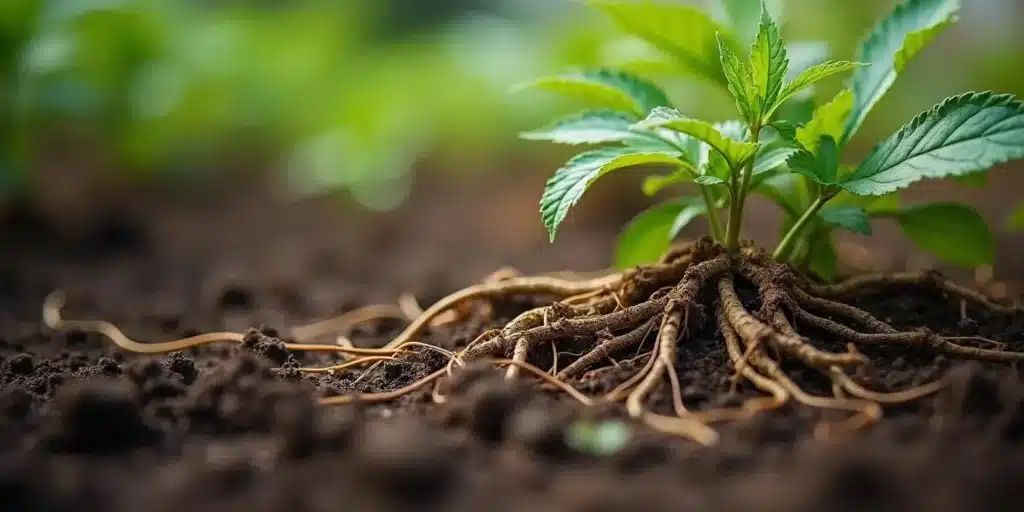
How to Fix Cannabis Root Lock
If flushing and repotting don’t work, consider root pruning. Gently remove the plant from its pot and trim away any dead or overly tangled roots. After pruning, place the plant in a new pot with fresh soil and consider applying a root stimulator. Maintaining consistent environmental conditions will also help support the recovery process.
Cannabis Root Lock Treatment Methods
Treatment methods can vary based on the severity. For mild cases, simple soil amendments may suffice. For more severe issues, hydroponic systems can offer a solution, as they allow precise control over nutrient delivery. Exploring aeroponic systems can also be an alternative for those facing persistent root issues.
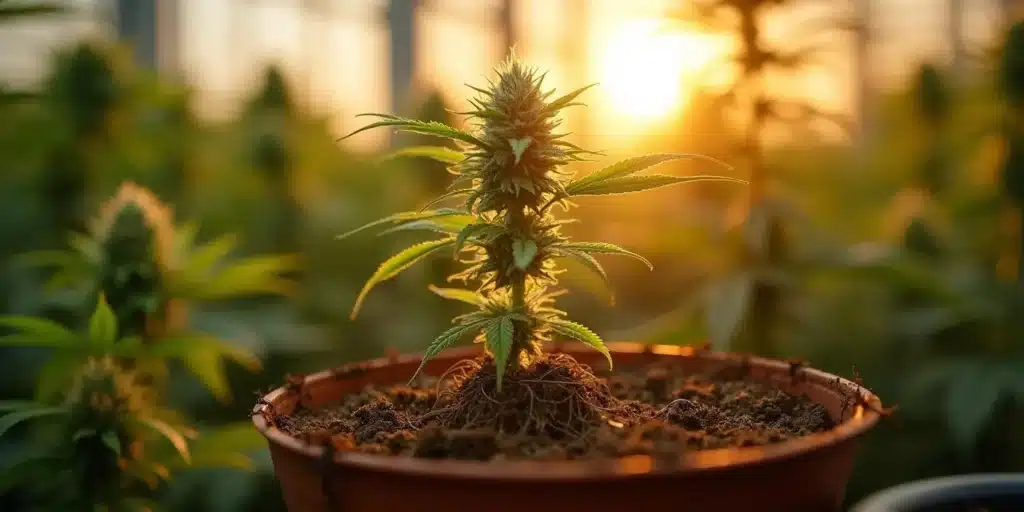
FAQs on Cannabis Root Lock
What is cannabis root lock?
Cannabis root lock occurs when a plant’s roots can’t access the nutrients available in the soil. This usually happens due to compacted soil or tangled roots, preventing nutrient uptake. The result is a plant that struggles to grow, with yellowing leaves and stunted development.
Addressing root lock involves ensuring proper soil conditions and root health. By providing a well-aerated growing medium and adequate space for root expansion, you can prevent this issue from taking a toll on your plants.
The root cause of cannabis root lock is essential for effective management. Soil composition and watering habits play a significant role, and minor adjustments can significantly impact plant health.
Furthermore, recognizing the environmental factors contributing to root lock can aid in developing a comprehensive care strategy. By integrating holistic growing practices, you can enhance the resilience of your plants against root lock.
How can I prevent root lock in my cannabis plants?
Preventing root lock starts with choosing the right soil. Opt for a mix that promotes aeration and drainage. Adding perlite or coco coir can be beneficial. Regularly monitor your watering habits to avoid overwatering, as this can lead to soil compaction.
Additionally, rotating your crops and the needs of specific strains, like those from Blimburn Seeds, can help tailor your approach. Each strain might have unique requirements, so adjust your growing practices accordingly.
Incorporating a regular schedule of soil testing ensures that nutrient levels and pH are kept in balance. This proactive approach prevents the onset of cannabis root lock by maintaining optimal growing conditions for your plants.
Moreover, using mulch or cover crops can enhance soil structure and promote microbial activity, which aids in nutrient uptake and overall plant health. These practices collectively contribute to preventing root lock in cannabis growing.
What are some effective cannabis root lock solutions?
Flushing the soil with pH-balanced water is one of the quickest ways to address root lock. This helps remove any built-up salts or nutrients causing the issue. Repotting into larger containers with fresh soil is another effective solution.
For more serious cases, root pruning might be necessary. Carefully trim away tangled or dead roots and repot into a well-draining soil mix. This can give your plants the fresh start they need to recover.
Integrating beneficial bacteria into the soil can further enhance root health, serving as an effective cannabis root lock solution. These organisms support nutrient balance and prevent the recurrence of lock.
Lastly, developing a tailored nutrient regimen based on plant needs and growth stages can optimize health and prevent future issues. This personalized care strategy is key to long-term success in cannabis cultivation.
Can certain cannabis strains help avoid root lock?
Yes, some strains might be more resistant to root lock due to their growth patterns or nutrient requirements. Strains such as Blue Dream may have specific needs that, if met, can reduce the likelihood of root lock.
Choosing the right strain for your growing conditions and setting up an appropriate environment can make a significant difference. Consider experimenting with different strains to find what works best for you.
The genetic predispositions of different strains can aid in selecting varieties less prone to root lock. Some strains naturally adapt better to certain soil types or climatic conditions, reducing stress.
Additionally, consulting with seed providers or experienced growers can provide insights into strain-specific care practices. This knowledge helps optimize plant health and prevent root lock.
How does cannabis root lock affect plant health?
Root lock severely impacts plant health by restricting nutrient uptake. This leads to yellowing leaves, stunted growth, and wilting. Without intervention, the plant’s overall health will decline rapidly.
By addressing the root cause, you can restore nutrient access and improve plant vigor. Regular monitoring and adjusting your growing practices can help maintain healthy plant development and avoid future issues.
Long-term effects of cannabis root lock can include a weakened plant structure and reduced resistance to pests and diseases. Ensuring robust root health is essential for sustaining overall plant vitality.
Implementing targeted cannabis root lock treatment methods can reverse damage and promote recovery. By focusing on comprehensive plant care, you can enhance resilience and ensure a productive growing cycle.


